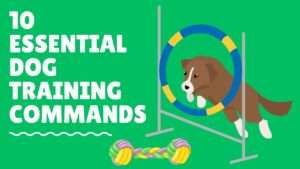Have you ever marveled at the impressive obedience of a well-trained dog? Behind every well-behaved canine companion lies a series of effective training techniques, one of which is backchaining. It’s a powerful method used by professional dog trainers to teach complex behaviors by breaking them down into smaller, manageable parts. But what exactly is backchaining, and how can it help you train your furry friend? Let’s delve into the world of backchaining and uncover its secrets in this comprehensive guide.
Contents Overview
What is Backchaining?
Backchaining is a dog training technique where you teach a behavior by starting with the last step and gradually working backward to the first step. Instead of beginning with the initial action, you focus on the outcome, then systematically add preceding actions until the entire behavior is mastered.
How Does Backchaining Work?
The concept of backchaining relies on the principle of reinforcing the end of a behavior sequence, making it more likely for the dog to repeat the entire sequence in the future. Here’s how it typically unfolds:
1- Identify the Target Behavior:
Determine the desired behavior you want your dog to learn. Whether it’s fetching an object, performing a trick, or mastering an agility course, clarity on the end goal is essential.
2- Break it Down:
Analyze the behavior and break it down into distinct steps or components. Each step should be simple enough for your dog to understand and execute.
3- Start at the End:
Begin training by teaching the last step of the behavior sequence. This step should be something your dog already knows well or can easily learn.
4- Reinforce Success:
Once your dog reliably performs the last step, praise and reward them enthusiastically. Positive reinforcement encourages repetition and sets the stage for learning the preceding steps.
5- Work Backward:
Gradually add the previous step before the final one, repeating the process of training, reinforcing, and progressing backward through the sequence.
6- Repeat and Refine:
Continue this backward chaining process until your dog can smoothly execute the entire behavior from start to finish.
Benefits of Backchaining
Backchaining offers several advantages in dog training:
- Clear Progression: Breaking down complex behaviors into smaller components provides a clear path to success, making it easier for both you and your dog to track progress.
- Reduced Frustration: By starting with the final step, your dog experiences early success, reducing frustration and building confidence throughout the training process.
- Improved Retention: Backchaining enhances learning retention as each step is mastered before moving on to the next, ensuring a solid foundation for the entire behavior.
- Enhanced Focus: Focusing on one step at a time helps prevent overwhelm and allows your dog to concentrate on mastering each component effectively.
Tips for Successful Backchaining
To maximize the effectiveness of backchaining, consider the following tips:
- Keep Sessions Short: Training sessions should be brief to maintain your dog’s focus and prevent fatigue or boredom.
- Use High-Value Rewards: Offer rewards that are highly motivating for your dog, such as treats, praise, or playtime, to reinforce desired behaviors effectively.
- Be Patient: Every dog learns at their own pace, so patience is key. Celebrate small victories and remain consistent in your training efforts.
- Practice Regularly: Consistent practice is crucial for reinforcing learning and solidifying behaviors. Aim for frequent, short training sessions rather than sporadic, lengthy ones.
- End on a Positive Note: Always conclude training sessions with success, even if it means revisiting a step your dog already knows well. Ending on a positive note keeps your dog engaged and eager for the next session.
Bottom Line
In the world of dog training, backchaining serves as a valuable tool for teaching complex behaviors systematically and efficiently. By starting with the end in mind and working backward through the behavior sequence, you can help your furry friend master new skills with confidence and clarity. Remember, patience, consistency, and positive reinforcement are the keys to success in backchaining, paving the way for a harmonious and fulfilling relationship between you and your canine companion. So, why not give backchaining a try and unlock your dog’s full potential today?
































+ There are no comments
Add yours